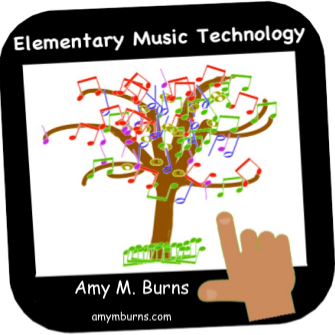Maximizing One Song: 15 Ideas for Your Elementary Music Classroom
As elementary music educators, we know the power of repetition in building strong musical skills. One of my favorite ways to teach a song is to use it in a variety of engaging activities. This approach not only reinforces essential music concepts, but it also allows students to experience the song in different ways before they even start singing it! In the process, they practice rhythm, note reading, steady beat, and creativity—all while having fun.
In this post, I’ll show you how to turn the folk song Four White Horses from the Virgin Islands into a versatile teaching tool for students from preschool through grade 5. Ready to dive in? Let’s get started!
The Song: Four White Horses
Lyrics:
Four white horses, on the river,
Hey, hey, hey, up tomorrow,
Up tomorrow is a rainy day.
Come on up to the shallow bay,
Shallow bay is a ripe banana,
Up tomorrow is a rainy day.
15 Musical Ideas for Four White Horses:
Steady Beat Practice (Grades PS-K, but can extend to Grades 1-5)
Sing or play a recording of the song and have students follow your steady beat movements, such as tapping knees, clapping hands, or tapping their nose or chest. Simple, but effective!Crossing the Midline (Grades PS-K, extendable to Grades 1-5)
While singing or playing the song, guide students through movements that cross their midline, helping with coordination and motor skills.Steady Beat Walking (Grades PS-K, extendable to Grades 1-5)
Have students walk the steady beat while you sing the song slowly. This is a great way to reinforce rhythm and movement.Create an Ostinato (Grades K-5)
Invite students to create their own ostinato (a repeating rhythmic or melodic pattern) and perform it using body percussion while the song is sung.Ostinato Performance (Grades K-5)
Split the class in half—one group sings the song while the other performs the ostinato. Switch roles halfway through!Perform the Steady Beat on Instruments (Grades PS-K, but can extend to Grades 1-5)
Use non-pitched percussion instruments (e.g., egg shakers, rhythm sticks, or shape drums) to perform the steady beat while the song is sung. It's a great way to introduce ensemble performance!Half Note Slide (Grades K-5)
Sing the song at a faster tempo and have students move to the half note with a step-slide movement. This is a fun and energetic way to practice half note rhythms!Barred Instrument or Boomwhacker Tonic Half Note Bordun (Grades 1-5)
Transfer the movements from the previous activity to pitched instruments like Boomwhackers or barred instruments (e.g., xylophones). Students can play the tonic note (G) while singing the song.Rhythm Stick Patterns (Grades 1-5)
Students play the rhythm of the song’s lyrics on rhythm sticks. This strengthens their understanding of rhythmic patterns and text setting.Rhythm of the Words vs. Steady Beat (Grades 1-5)
Split the class into two groups. One group performs the rhythm of the words while the other performs the steady beat using body percussion or pitched instruments.Barred Instrument Arrangement by Eric Young (Grades 2-5)
This pre-arranged piece, available for free download, gives students an opportunity to perform an ensemble piece on barred instruments (https://drive.google.com/file/d/1BOxDBnP9ZEeZRAL5B1Fm5IG5MW_1-DXn/view?usp=sharing).Play the 4-Person/2-Pairs Game (grades 1 and up):
First, clap hands with the partner across from you: Pair 1 claps high, Pair 2 claps low to avoid colliding
Then, clap your own hands.
Next, clap hands with the people to your sides.
Then, clap your own hands.
Repeat this pattern throughout the song.
Remember, you can slow the song down to practice at a slower tempo.
Want the PDF from MusicFirst Elementary with a diagram and chart? Click here:
https://drive.google.com/file/d/1g5qviqNiHtqkzKSRMs8Tin8kL3ouO5_c/view?usp=sharing
Explore the Song’s Origins
Dig into the history of Four White Horses with your students! Use MusicFirst Elementary's Listen and Respond activity to explore the folk song’s roots in the Virgin Islands.
14. Add Classroom Pitched & Band/Orchestra Instruments (Grades 2 and up)
Enhance the song by incorporating pitched instruments (e.g., ukuleles, Boomwhackers, or recorders) and even band/orchestra parts! With MusicFirst Elementary, you can create parts for multiple instruments and build a rich, layered performance.
15. Create a Rhythm Composition as a B Section (Grades 2 and up)
Take the song’s structure and add a B Section with your students using either traditional methods or MusicFirst Elementary’s Rhythm Grids Creative Tool. Perform it in ABA form—body percussion or instruments can be used for the B Section.
Engagement
These activities are designed to be flexible, scalable, and highly engaging. Here’s why:
Versatility Across Grade Levels: These activities can be adapted for students from preschool through grade 5, providing a scaffolded approach as students develop musical skills.
Reinforcing Multiple Skills: From rhythm and note reading to steady beat and performance, students work on a variety of essential musical skills.
Creative & Active Learning: Students stay active and engaged, creating, playing, singing, and dancing throughout the lesson.
Tech Integration: While traditional methods are ideal, using technology tools like MusicFirst Elementary can help enhance the learning experience, especially when students need a bit more structure or support.
This approach keeps students at the center of the learning process, ensuring that they have a fun, creative, and immersive experience.
Take Your Classroom to the Next Level with MusicFirst Elementary
Some of these activities integrate seamlessly with the MusicFirst Elementary curriculum. Want to try it for free? Click here for a 30-day trial and see how it can enhance your classroom: https://www.musicfirstelementary.com/funnel/usa




